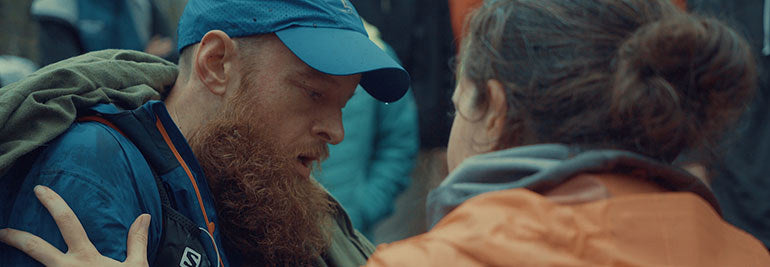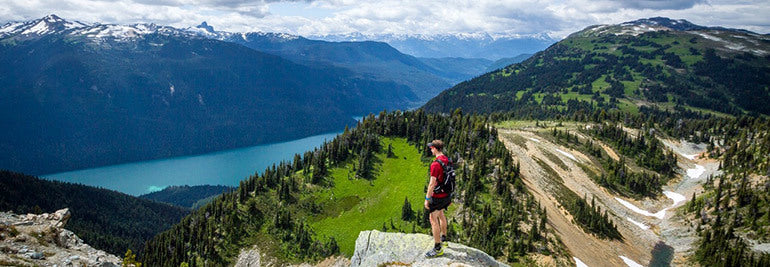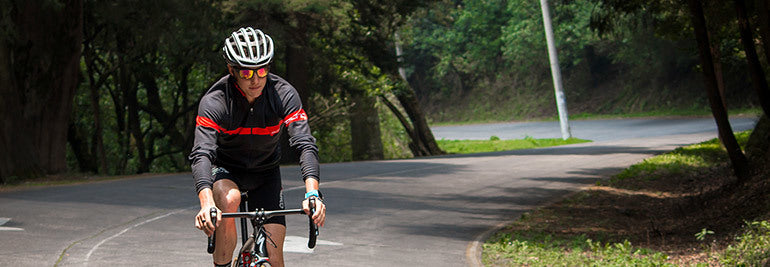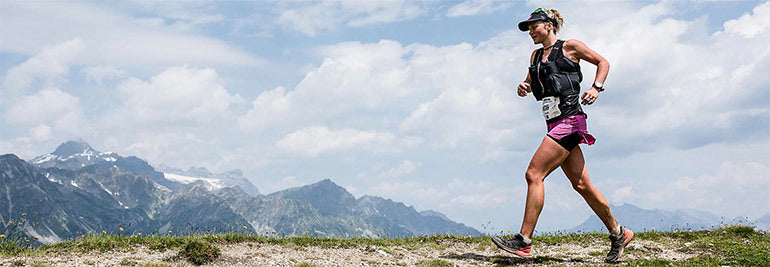

Suunto Blog

What’s tougher: running the Barkley Marathons… or training for it?
But as we approach the Barkley’s off-season, let’s take a look not at the race – but the training. Soon Robbins will release a short film detailing his Barkley experience – in anticipation, he’s shared a short piece focused on an incredibly difficult full overnight session where the goal was to reach 20,000ft (6,100m) of climbing in around 11 hours. See how his session unfolds – then keep reading for some more insight into his ‘off-season’.
Watch this advanced preview of Where Dreams Go To Die documentary now.
If this video doesn’t make your legs hurt, then this will: Robbins just finished the Nolan’s Fourteeners, fourteen 14,000 peaks in 100 miles, with a 60-hour cut-off time. Less than 20 people have ever completed the route.
A post shared by Gary Robbins (@garyrobbins) on Jul 31, 2017 at 10:24am PDT
"Adventures were had, and we got it done. Nolan's 14 finishers in 56h39m, with the best adventure partner imaginable." –@garyrobbins
We’ve collected some of Gary's thoughts and feelings on the recent adventures, what’s upcoming, and what’s not just worth the time (hint: hypoxic training). Read on.
You didn’t have the easiest time on Nolan’s!
After trudging through fourteen plus hours of fog, wind and rain we found ourselves hypothermic and in a bad state. We actually had some snow flurries on Oxford (8th peak going south to north) and we realized we couldn't safely continue. We made the hard call to drop off the mountain and to call it a day. We skipped Belford (maybe one mile away) because of the state we were in. We dropped about five miles down to a trailhead and had our families and crew meet us there. After warming up and being reminded by my lovely wife that we still had 31 hours left to get this done we made the call to get back in the game. We turned around and headed all the way back up to the saddle we'd dropped off maybe five hours earlier.
Nolan’s Fourteeners are like a Barkley, with less vertical but way more altitude…
Exactly. It’s only been done a handful of times. I’ll be coming straight from sea level into that! But we had access to our support crew – we can check in six or seven times over the course of the traverse.
The altitude is the biggest issue.
Yeah – I live at the coast. But my partner in the coaching business studies this stuff – he says I have to spend 12 hours a day in a hypoxic chamber if I want any benefit from it. No time for that!
You have a few events of your own you’re organizing.
I run a race series back home and I’ve got events before and after the Nolan’s attempt. The biggest is the Squamish 50 – it’s the biggest ultra in Canada, with 1200 participants from 20 countries.
Do you compete in them yourself?
I just don’t have the time. I want to make sure it’s a great event for everyone who comes. I don’t run in the events because I need to run the event – I congratulate every finisher who comes across the line. During the Squamish 50 I’ll get about 8 hours of sleep over three days.
You’re an organizer with some epic terrain close by. Any chance we’ll see a race like the Barkley, in your backyard?
You know, we have the terrain for it – it could rival the Barkley on paper. But it’s damn near impossible to get the permits, and I don’t feel the need to replicate something so unique that Laz has created.
Take us back to your recent adventure on Nolan’s – how did you finish?
It rained for another 10+ hours up high but eventually the weather broke, before it broke us, and we were rewarded with a clear night on our third to last peak (La Plata) and a beautiful sunrise while ascending our second to last peak, the highest point in Colorado, Mt. Elbert at 14,433. I shed a tear on our final peak, Mt. Massive because I really couldn't believe what we'd just accomplished. It wasn't what we'd set out to do time wise, and I'm pretty sure we just completed the least scenic version of Nolan's ever, but the sense of accomplishment that overwhelms me today is the absolute definition of euphoria.
So there’s no question you’re doing Barkley again.
I’m 100% returning for a third attempt in 2018.
Main image and video by The Ginger Runner

How to import training data from other sports services into Suunto Movescount.
Do you want to import training data stored within other sports services into Suunto Movescount? You can import training data using these three third-party services.
FitnessSyncer.FitnessSyncer allows you to synchronise your healthcare and fitness data with over 40 different devices and apps. Healthcare and fitness data from other apps, trackers and devices can be seamlessly moved to Suunto Movescount.
To sync using FitnessSyncer, first create an account on fitnessyncer.com, add a data source on your account page and add Suunto Movescount as a sync destination in your account settings.
More information about FitnessSyncer.
RunGap.RunGap is a workout data management tool for iOS that imports your complete workout history from other services available on your iPhone or iPad, including Suunto Movescount, Garmin Connect, Endomondo, RunKeeper, Strava, Runtastic, Polar, Adidas and other services such as Magellan, Nike+, etc., and imports your complete training history.
The beauty of RunGap is that it also has the ability to bulk sync all your training data with Suunto Movescount - instructions on how to use Suunto Movescount with RunGap can be found here.
More information about RunGap
MX Activity MoverMX Activity Mover allows you to transfer training logs from Garmin Connect or Polar Personaltrainer directly to Suunto Movescount. Data can be transferred directly per user identity (Garmin and Polar) or as a single activity via file upload (Garmin). The full version of MX Activity Mover can be purchased to upload multiple activities at once. You can select a time range of activities to transfer (send/receive).
An additional feature of MX Activity Mover allows you to include a link to the original Garmin Connect or Polar Personaltrainer activity in the description field of the transferred Move.
More information about MX Activity Mover

Three ways to navigate with a Suunto Spartan GPS watch
Jeff Pelletier, a trail runner and filmmaker from Vancouver, BC, Canada put together this great video with some tips for navigating with the Suunto Spartan. He showcases how you can navigate in new surroundings or challenging terrain using these three different features of the Spartan.
1. Routes
2. Compass
3. Breadcrumb
Watch the video now!
You are not limited to these three ways to navigate. You can also use POI navigation (read how this is done here). In addition, as of the Spartan update in June (1.9.36) you can now also use find back navigation which plots your quickest route back to your starting point utilizing the compass to guide you.
Main image by @jpelletier
Learn more about Suunto Spartan GPS watches

Meet the young-gun tri-athlete from the highest big city in the world
I started with triathlon at age 10
Now I'm 21. Here in Mexico we have a lot of races for young kids - that’s really good! However, not many are very competitive – but I was serious on it from the start! For me, there’s nothing funny going on in the races. The very first race, I was in it to win it. But we have a very big community – and the past five years, it has been growing in the whole country.
I love the bike
It’s my favorite discipline to train. But my best competitively is the run.
I have two big races this year
The 70.3 Worlds in September, and of course, XTERRA Worlds in October. There’s a few people mixing it up between normal tri and XTERRA, but as far as I know, no one really has dedicated themselves to doing both like I have. I would say I have had more success XTERRA racing, because in long distance triathlon I need more time for muscle maturity. It's all a process. I believe with really hard work I can succeed in both as I have done in XTERRA – and that means to be the world champion.
I’m a go-by-feel kind of guy
But I definitely use all the technology – I pay tons of attention to heart rate and wattage on the bike. I use the Spartan and I loved my Ambit – I have always loved the Suunto brand, and the way the brand keeps you motivated to do different things and explore, and I’m really happy about that. It’s a good tool to go out and find some adventures.
I do a 30-hour week of training
I’ll go the mountains in Mexico City – about five sessions of swimming. The bike is pretty difficult – so I do a lot of indoor and mountain bike, about 15 hours, and about nine or ten hours of running, approximately five hours of swimming, and then of course some functional gym stuff.
Living in Mexico City is a plus and minus
It’s at 2000m, so I think sometimes that the altitude gives me a training advantage. But I have to do some mixed training, because that way I can do much more volume. Often I’ll go to sea level at San Diego or to Cozumel for more training.
I always talk with my dad before the race
We talk about the strategy and make the plan. I’m nervous, but it’s a good feeling. I’m mostly a relaxed guy – except on the race course.
And so is my age
At the moment my age is an advantage sometimes – I’m one of the youngest pros, always – and I’ve got a lot of energy. But that also means a lack of muscular maturity. When you’re totally mature with your muscles, you’ll be stronger - simple as that. I still have another six or seven years until muscular maturity, so i’m hoping to be performing at my best then. I think the bike takes the longest to get better at. But everything is going well.

Meet the 21-year-old woman on a six-year running high
I ran my first 100km when I was 16 just one year after I started running
Yep, I went from 0 to 100 in one year at age 16. It’s my dad’s fault. His name is Ashley. It was his second 100k. He’d been running marathons, and once realized he wouldn’t get faster, he decided to go longer. The race was the Surf Coast century.
I’ve run six 100ks since.
And more 50ks than I can even remember. I do them in training – I'll just head out for an afternoon 50. I did three weekends in a row of just 50k runs.
I didn’t love running at the start.
I thought it was hard! Then there I was running a 50k, back to back to back every weekend. It’s amazing what you can do.
But now I’ve been running for six years non-stop.
I started running, and I just did so many easy kilometers with my dad. I built this base very naturally, not forced. Now that I have the base I can do the harder training sessions. I have six years of non-stop running. That’s a big base no matter how old you are.
What I love most is the places I go and the people I meet.
If you didn’t have the people in this sport that were so raw and so organic, it would be a completely different sport. The places you go is really exciting but the people you meet keep you competing.
I want to do the Hard Rock 100
Just because it’s so hard to get into. Transvulcania. And some of that are totally off the grid – ones I don’t even know about, in really cool locations.
I always have a plan, and I never follow it.
I’m pretty reactive and pretty in tune with my body. I’m totally OK with missing a training session or going day by day. I always have a plan but I very rarely follow it. My racing style is not aggressive – I would say I’m someone who eases into it. I start slow and finish strong.
My toughest race? World Sky Running Champs 2016
It was a marathon in Catalonia. I had never seen terrain quite like it. A lot of scree and skiing down scree slopes. I really struggled with it. But I finished the race.
I’m so glad I’m 21...
So I was able to run my last big event: The Marathon du Mont Blanc, 80km of trail in Chamonix. It was the first time I could run the race – because I’m finally 21 years old. But the big goal of the year is the TDS as part of the UTMB weekend.
…but I was a little terrified to start my last race!
I’m a big fish in a small pond in Australia. Now it feels like I’m stepping up to the big leagues. It’s very leveling and I’m a small fish in a big pond – the talent and level is amazing. And more importantly, we just don’t have terrain like this in Australia. I was a bit terrified for my last race! I didn’t have enough time to run every section – only the first climb and last climb, and a few sections in between.
It was 80km.. then 85km… then 92km
The race is called the Marathon du Mont Blanc 80km. They told us the actual course was 85km. Then they modified it to get us more water – but that came with an extra 500m climb and seven more kilometers.
I had a great start, a tough middle section, and strong finish
I felt pretty tired coming into Chamonix, and almost didn’t start the race. The first three hours were great, the next four were terrible, then I hit the halfway point and started counting down the K’s and picking off ladies as I moved up field. I finished in 13h23m, twenty minutes behind 1st place, in a tight battle for 2nd place – I was only a minute ahead of 3rd!
It’s an honor to be a young gun
I know a lot of people are watching me and saying 'maybe it’s safe to start that early.' It’s really exciting to inspire other young runners.
Images by Damien Rosso / Droz Photo

Want to take a great photo? Hold your breath
Diving was something I’d always done.
As a kid, while swimming, I spent more time beneath the surface than above it. But my free dive obsession really started with a SCUBA diving trip in Egypt. During that trip I actually was snorkeling with a friend, and trying to get our depth gauge as deep as we could. Which is a stupid thing to do, by the way. But I was having so much fun, I took a course in freediving… and haven’t been dry since.
My best was good enough for a Dutch National Record.
With fins to 60m, without to 55m, and free immersion to 65m. But I was a very average free diver during the time I was competing. At the time, 2011, the 55m was top 20. It’s nowhere near that anymore.
I’ve had seals kiss my camera
Last year, here in Cornwall, we were swimming with seals. Really shy in the beginning, but after a while, one was interested in my fins. Then he got close enough to my camera dome that his whiskers touched it. That was an interaction where you feel someone looking back at you.
I get in the water with a different mindset than the diver.
We both dive, but they have to go within themselves – all I do is look outside of myself. I look at them, the environment, the light. The same actions with completely opposite goals.
Safety dives helped me train.
At every comp, I did safety dives. There is a diver at depth and 30m. And because I did a lot of that, I knew I had a lot of stamina to do repeated dives. The deep guys go to 100m but do it once. The safety guys – and me – go to 30m, but we do it all day long.
I’m definitely, absolutely doing more work than the guys diving
I’m just not going as deep. I have to swim to 15m, see the diver, swim around him, get in front, crane your neck – and it’s a bad position. They’re going for maximum depth efficiency, I’m going for bursts of speed to get my shot. Totally inefficient as far as diving goes. I don’t become a better free diver by being a free dive photographer.
I love Will Trubridge
I met him first in 2007, but it took me till 2012 to work with him. Now we’re actually friends. He can be a bit shy. It took until I found out he had a wicked sense of humor for us to become friends. It’s nice to work with him – he’s a good delegator who tells you what he wants or expects, and he’s really clear about what he can do.
At Vertical Blue, I do fifty dives a day
Mostly hanging out between 10 – 20m. That’s my office, ten to twenty meters deep. That’s a depth where the light is still good, the background is good, and it’s easily achievable –I can do it on repeat all day long.
My dream dive is The Arch in the Blue Hole in Dahab
It’s an opening in a natural reef. The arch is at 58m, and then there’s a 30m overhang, then you have to go back up. To do the arch, with a camera, that would be spectacular.
All images © Daan Verhoeven / Vertical Blue
Read also 7 tips to help you make amazing diving videos and 10 tips to help you take amazing underwater photos
Learn more about Vertical Blue














































































